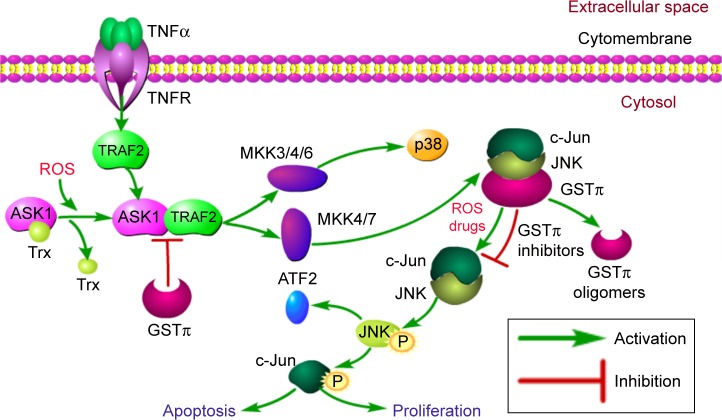Figure 4.
Ligand-binding properties of JNK and TRAF2.
Notes: Under physiological conditions, cells possess low JNK activity. JNK is sequestered in the form of the GSTπ–JNK protein complex. GSTπ dissociates from the GSTπ–JNK complex upon oxidative stress induced by drug administration, resulting in the accumulation of GSTπ oligomers. This results in c-Jun phosphorylation and/or ATF2 activation, and this progress further impacts downstream events as well. Meanwhile, TRAF2 recruitment to the plasma membrane stimulates the production of ROS. Subsequent oxidation of the previously inactive ASK1–Trx complex causes dissociation of the ASK1 molecule. TRAF2 then binds to ASK1 to activate the ASK1–JNK signaling cascade. Nevertheless, on account of high expression in tumor cells, GSTπ acts as an endogenous negative regulatory switch by forming complexes with JNK, preventing TRAF2–ASK1 interactions and ultimately inhibiting tumor-cell apoptosis and proliferation.
Abbreviation: GST, glutathione S-transferase.

